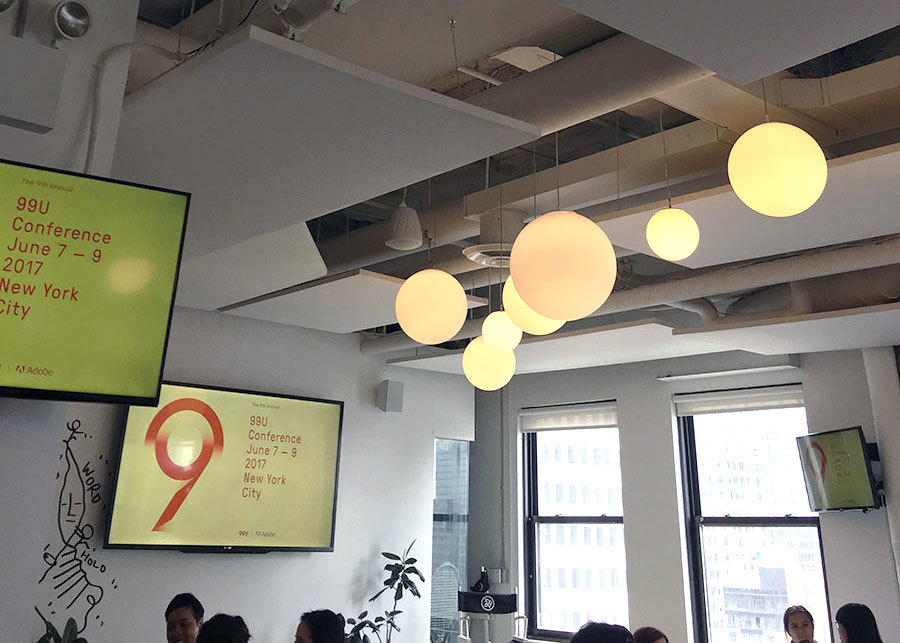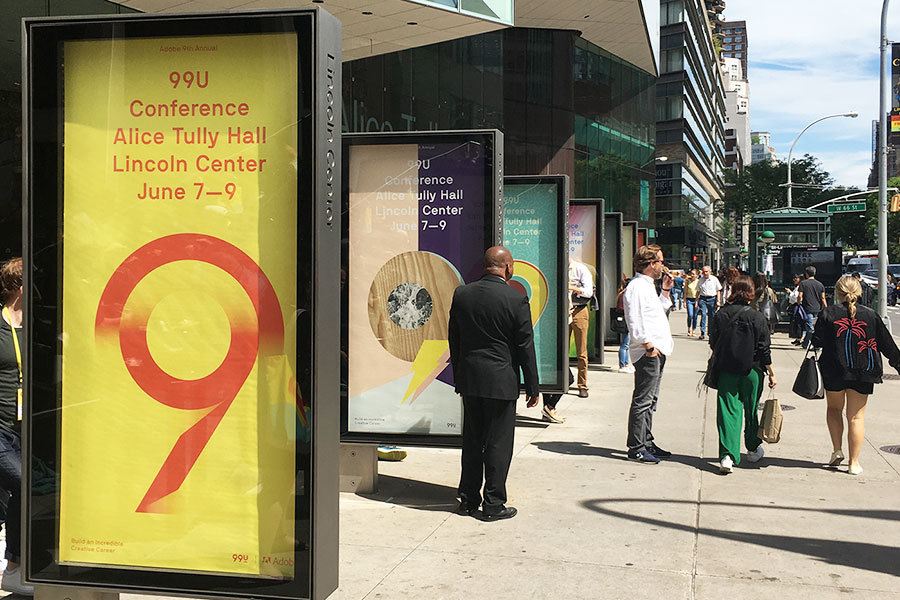The 99u Conference seems straightforward on paper – a conference for creatives held in NYC with talks lead by experts in all design disciplines. Before I attended my first 99u Conference in 2016, I assumed I’d be spending most of my time just listening. What surprised me most when I arrived was how strongly the conference calls for collaboration. The focus is to make connections with your peers and share your knowledge, not to take notes and sit idly through presentations.
99u 2016 left me with valuable skills, tools, and ideas that I applied to my workflow, and I was eager to see what 2017’s 99u had in store. The conference this year brought together a diverse group of creative professionals from some of the most influential brands, and I ended every day mulling over wonderful takeaways. There were so many pertinent points made throughout the three-day conference, but I’d like to highlight a few ideas that really resonated with me.
Create the Conditions for Creativity
Studio sessions give attendees the opportunity to leave the conference auditorium and visit agencies and companies throughout NYC. You’re able to discuss their workflows and processes in a more intimate setting, and it truly is one of my favorite components of the whole conference. The first studio session I attended this year was hosted by Refinery29, one of the largest women’s media outlets around.

Piera Gelardi, the executive creative director and co-founder of Refinery29, highlighted the company’s focus on creating digital content geared towards every woman and some challenges her team faced in an effort to adhere to that objective. As Refinery grew rapidly, her team’s need to create new content with a quick turnaround grew as well. This, paired with Piera’s review process, made it difficult for designers to produce completely original content. The team’s reliance on stock imagery increased and eventually the content produced began to look generic and hasty – and failed to represent Refinery’s audience accurately.
Piera realized that she needed to shift her focus and rely on the value and trust she placed in her team. She relinquished control over certain areas of their process and her creative team was able to flourish. When creatives are asked to produce so much so rapidly, burnout is inevitable. The studio session concluded with a series of group activities, and as we worked in our teams, it was comforting to hear that “design fatigue” happens to everyone. Creating the conditions for creativity is crucial, and understanding that you aren’t always going to produce the best ideas immediately allows you to move past that roadblock. Let yourself off the hook!
What’s in your mind is circumstantial
The second studio session I attended was hosted by a few team members from Verdes. Verdes is an advertising agency that focuses on the intersection of innovations and communications. They’re serious about improving discussion and perception accuracy. So serious, in fact, that they’ve developed a dictionary that helps you get to the clearest descriptor of an idea. The Verdes team focuses on communicating their ideas clearly and removing subjective passion from internal discussions, and their studio session topic centered around creating a common language for creativity.
Verdes partner Greg Matson explained how “creativity is code for consensus” and how within a rapidly changing creative industry, your idea needs to sell itself. Subjective passion is rarely constructive, so understand your reaction to an idea and explore. Once you’re ready, state your idea and explain the idea in detail (effectively “killing the joke”). Lack of explanation leaves negative space and there’s bound to be misinterpretation. Be clear, be concise, and be intentional.
Design for Friction
Our lives are surrounded by products created to reduce friction and make our interactions as seamless as possible. A lot of the time, this removal of friction is beneficial and positive. With this trend comes the assumption that users have an inability to navigate change, but you’ve got to allow users to adapt. In his talk, Steve Selzer, design manager at Airbnb, argued that a world without friction leads to complacency. “When we remove all friction, we remove opportunities for serendipity, confrontation, and personal growth.” Airbnb’s goals and values center around facilitating connections with people and spaces. Interaction is a crucial component in their business model, and Steve championed for the re-introduction of friction in Airbnb’s processes. Make value judgments. Design for skill-building. Design for self-reflection. Design for collisions. Design for confrontation. More often than not, your users will thank you for it.

The 99u conference is such a great way to grow in the creative community and gather insight from international attendees with new perspectives. The entire experience is refreshing and the comfortable environment removes all apprehension in sharing and discussing ideas. Did you attend this year? What were your key takeaways? I’d love to hear about them.